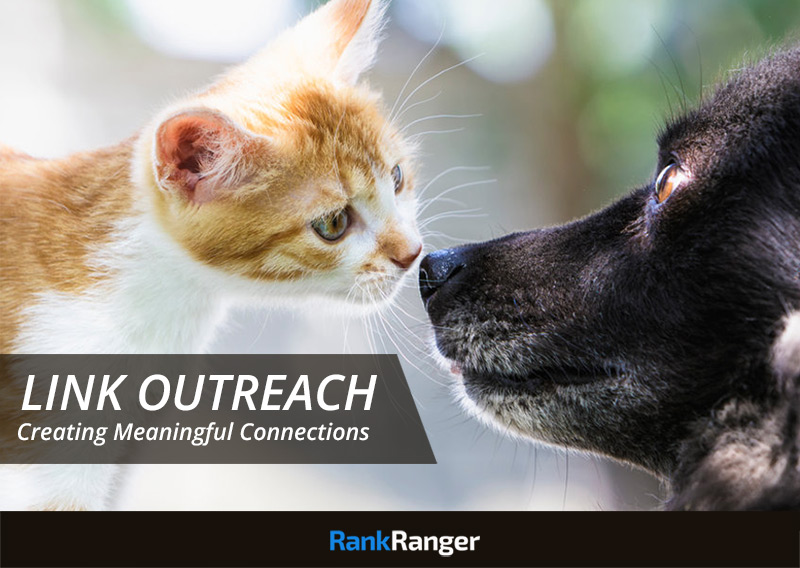
Posted by
Alexandra Tachalova

People are bombarded with hundreds of emails every day, and this is not an exaggeration. According to the most recent statistics, a person receives 200 emails a day on average. Surely, you can expect some of these messages to go right to the trash folder if the recipient finds them irrelevant – hardly anyone can handle writing as many replies.
So, obviously, the tactic of overwhelming your recipient with emails until they cave no longer works. The same goes for social media and LinkedIn, in particular.
Thus, the only way to cut through that noise is to start doing exactly the opposite, namely, adjusting your link prospecting angles and pitches so that they target the right group of people, speak their language, and ultimately help you build a relationship with them.
If you’re not sure how this approach works in practice, here’s a short guide you can follow.
Step #1: Build a List of Sites with a Connection to Your Brand
Ideally, the quality of your network for outreach depends directly on the level of affiliation between you and your partners. So, naturally, if you want to make your email outreach work, you need to target the sites that would somehow be linked to your business.
That’s why I always say that the best link prospecting angle is the one that allows you to connect and pitch to the websites that:
- Know your brand
- Have a positive attitude towards it
An important rule here is to look for websites representing companies with a real product or service. In my experience, these websites have the best growth potential.
Where should you look for such connections?
First and foremost, I recommend taking a closer look at your followers on social media networks. For B2B brands, it’s mostly LinkedIn and Twitter. There, you might find businesses from the same industry and niche, which can be your potential outreach prospects.
In case you have thousands of followers, and it will take a while to dig through all of them by hand, you can use tools like Followerwonk. It works with Twitter and lets you search through user bios to connect with relevant people and break down your followers by location, bio, or accounts they follow. You can also get the list of users subscribed to your Twitter page:
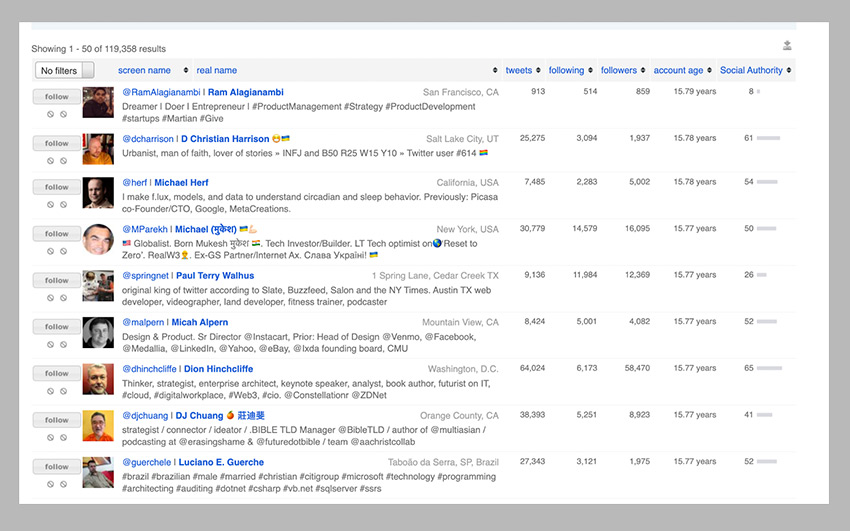
If you’re wondering about LinkedIn, it doesn’t let you export the list of followers, but you can look through it in the Analytics section. The preview to every profile includes the person’s job title and the name of the company they are working for:

I understand that it might take a while to get through the entire list, but it can truly help you uncover great outreach opportunities. Later, you can start doing it on a weekly or monthly basis and go through the lists of newly acquired followers.
Where else can you look for potential outreach prospects?
If you have a newsletter, you can look through the list of subscribers. There’s a wide array of tools that serve this purpose, including GetResponse and Mailchimp. They allow you to go through subscriber data, which includes:
- Email address
- Email history
- Activity
You can also filter out subscriber information to get their demographic data and company details.
Finally, you can find relevant prospects in your partners’ networks. I’ll cover this point a bit more in the next section.
Step #2: Go Beyond Your Circles to Find Sites You Have Something in Common With
Going through your followers and subscribers can indeed help you grow your outreach network. However, it will hardly work for a brand that hasn’t established a solid community around it yet.
If this is your case, I strongly advise you to start searching outside your current connections while keeping in mind that the ideal prospect should have something in common with your brand.
Basically, what I’m saying is that you should look for particular touchpoints that would help you identify the brand you can build a truly meaningful relationship with. Let’s go through these touchpoints one by one.
1. Shared partners
As I mentioned before, partnerships you currently have, even if they are few in number, can open the door to potential connections through word of mouth. Also, you can reach out to a group of sites linking back to a website belonging to your good partner. To find such sites quicker, you can go to Majestic and check newly acquired back links of any website you consider your partner:
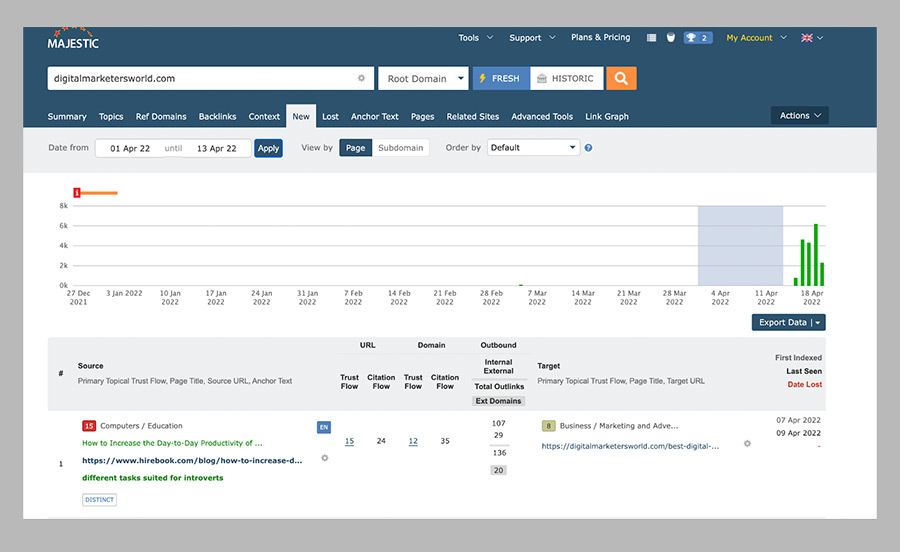
As you can see on the screenshot above, Majestic lets you set a specific timeframe, within which you get the list of external domains linking back to a particular website.
I’d also like to add that checking newly acquired links is more effective than looking at all acquired domains. The reason is simple – these links have been added recently, so you have more chances to actually get a reply.
2. Shared marketing goals
Here, I mean that you should search for websites that are also actively engaged in link building. It might seem like something way beyond your reach, but let me show you how you can do it in a few clicks.
Start by creating a list of keywords that are relevant to your niche. It’s also important to look for search terms that people in your industry want to rank for. To do this, you can use the Rank Ranger Keyword Research tool – it lets you explore the keywords by relevance:
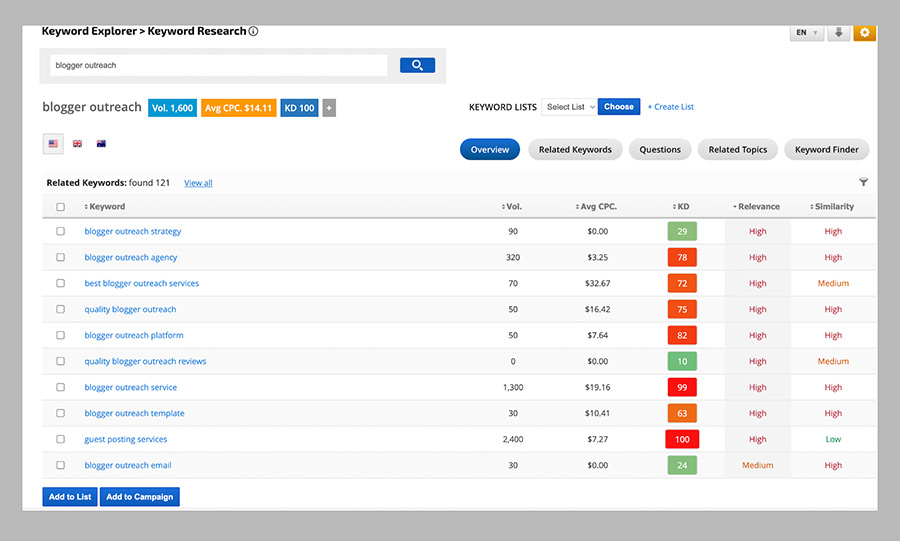
Next, I usually hover over to SEOquake and use its toolbar to get a list of sites ranking by the search terms I’m interested in. All you have to do is export CSV to be able to work with this list further:
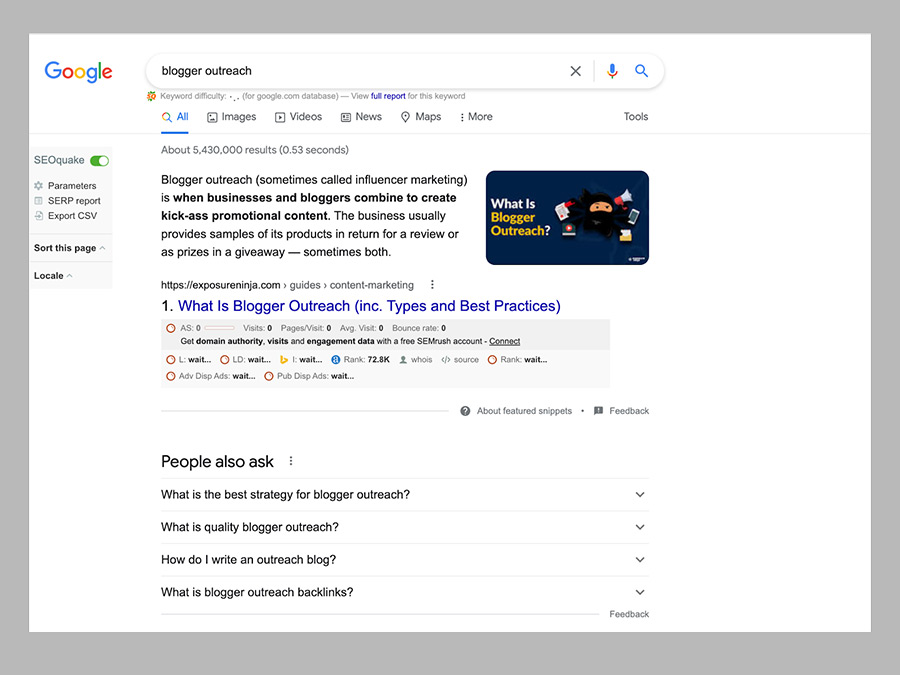
For this step, I also advise increasing the number of search engine result pages by going to your browser’s settings. This way, you’ll have more options to work with:
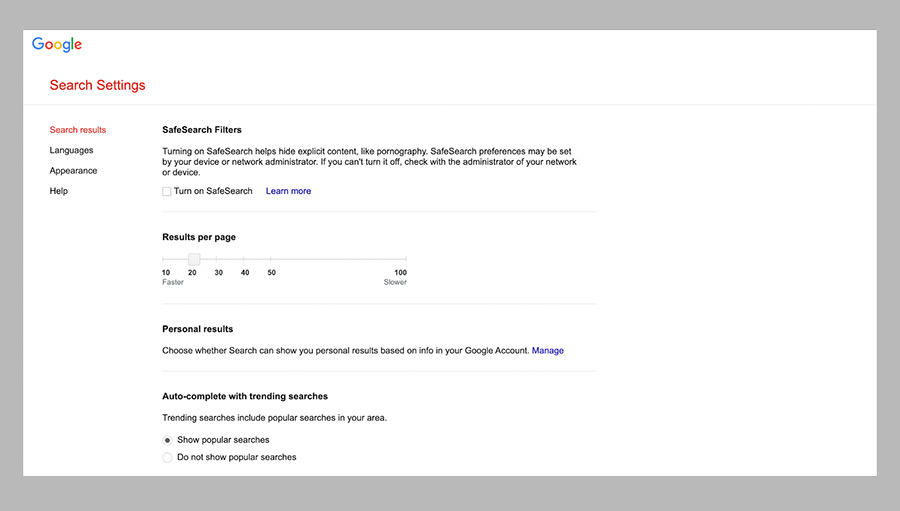
Finally, to complete your search for websites actively engaged in link building, go to the Majestic Bulk Backlink Checker to identify the pages that have already built some links. This is what the report looks like:
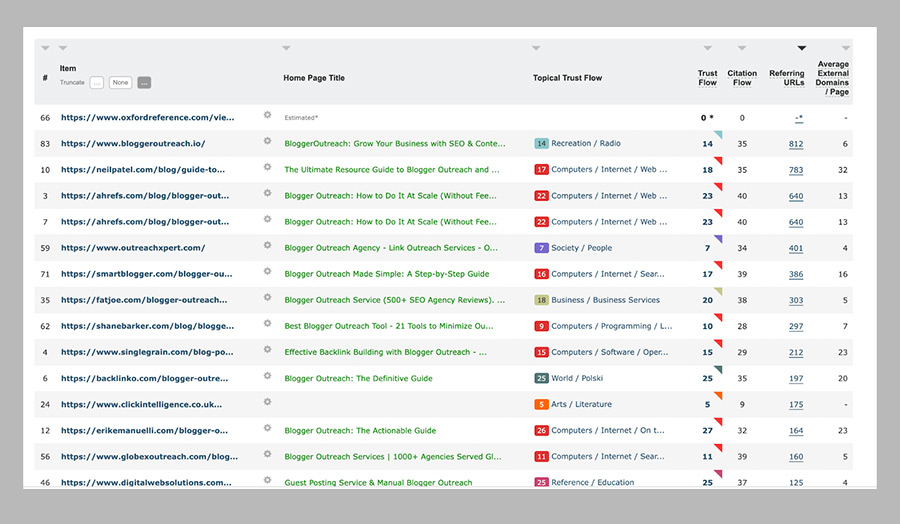
To increase your chances of getting an actual response to your outreach email, I recommend focusing on the websites with a smaller Trust Flow. For instance, you can see that postaga.com has a lower trust Flow compared to other results, but it still managed to build links back to its page:
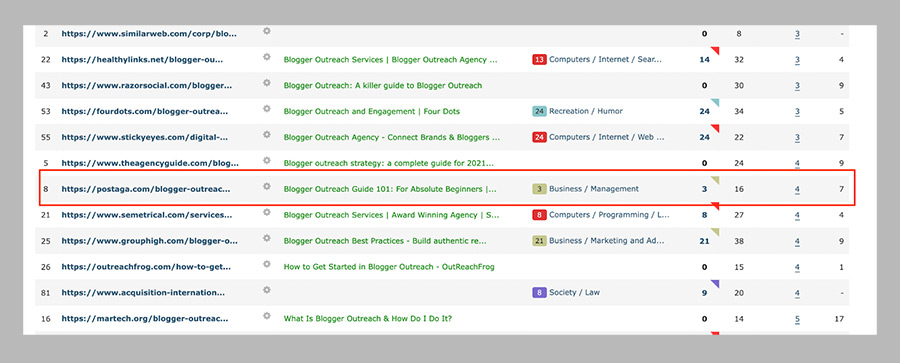
When you handpick the websites with the best potential for outreach, the final step is to reach out and see whether you can team up with them on a link building side. The safest option is to go to LinkedIn, find the person responsible for marketing/SEO/partnerships at the company that owns a website you are interested in collaborating with and write directly to them.
Of course, to increase your chances of getting a reply, you need to find the topic that would spark a connection between you and the prospect. The topic can be location-based or related to shared interests. It also can be something as simple as asking a person about their background picture.
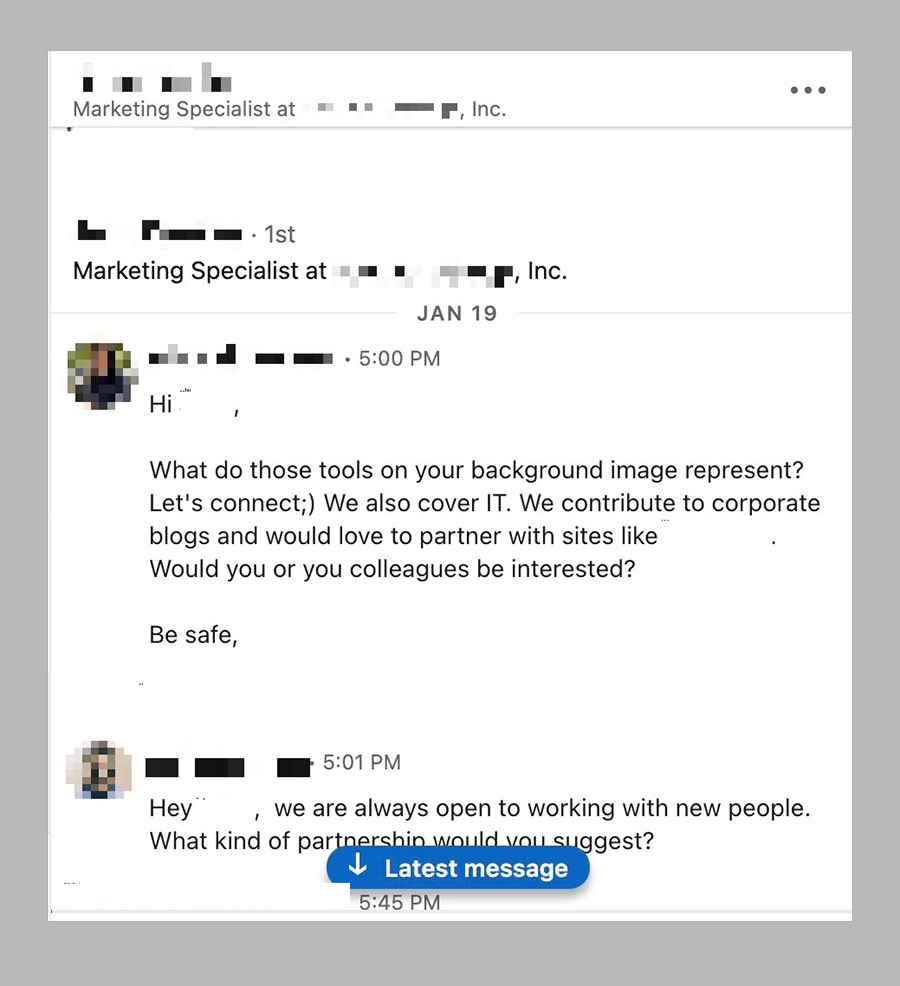
Another great option is to talk about the recent activity on their LinkedIn page – the post they made, the article they shared, or the comment they left on someone’s account.
Step #3: Create Connections Yourself
People say that if the mountain doesn’t come to Mohammad, Mohammad must go to the mountain. The same goes for building the network of connections for email outreach – if you want more opportunities, you should create them yourself.
Here, you can do whatever it takes to bring you closer to the people working for the brands with websites related to yours. The most straightforward way is to join an engaging conversation on LinkedIn or Twitter and then reach out to people involved in it. You can also spark a conversation yourself:
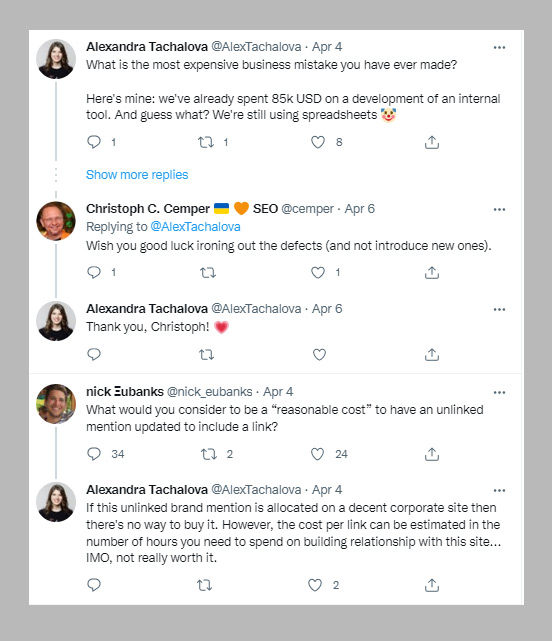
Adding a hashtag to your post will make it visible to more people.
Next, it’s always a good idea to join leading industry groups and look for possible connections among group participants. Look through group activity and posts – there’s a chance someone has offered or is looking for partnership opportunities.
For instance, by commenting on this one post below, you already get access to 130+ people who liked it and 49 people who commented on it. You can go through their profiles and identify the best candidates for email outreach:
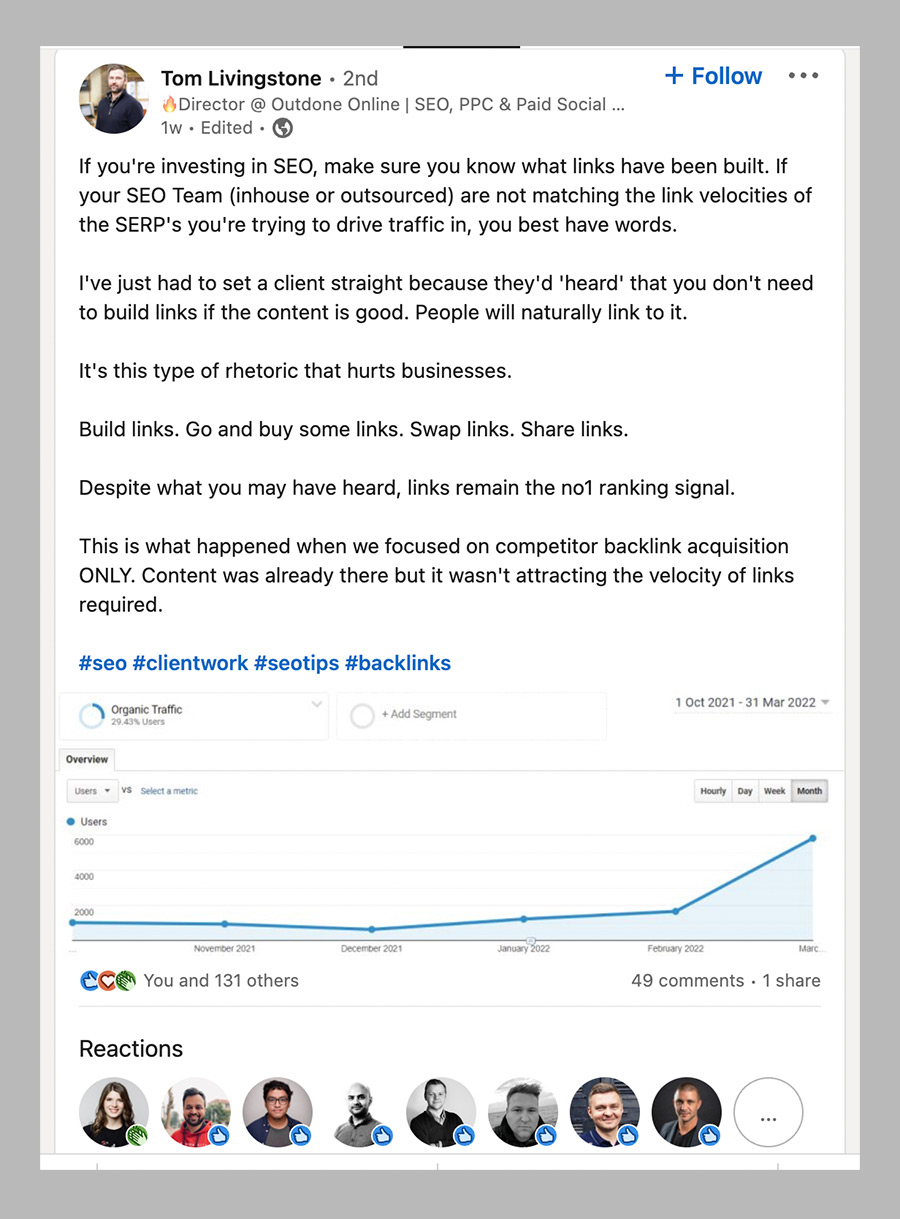
Finally, you can create marketing activities that will allow capturing the right type of leads. Such activities may include:
- Conferences
- Webinars
- Newsletters
- Closed communities
For instance, Digital Olympus organizes a conference, during which the participants can find relevant connections and build up their network of partners while also improving their knowledge about SEO and link building.
Over to You
To sum up the main point I want to get across, building meaningful connections is the only way to successful email outreach. That’s why all your effort should go towards building a list of truly relevant prospects who know your brand and perceive it in a positive way.
There are several ways you can follow to find potential connections. Let me sum them up for you:
- Going through the list of your SMM followers or subscribers
- Reaching out to your partners to help you find outreach prospects
- Finding someone with shared link building goals
- Reaching out to people coming from the same niche/industry on social media
- Creating marketing activities to capture the right type of leads
These tips also work for everyone new to email outreach as they help you approach this strategy the right way from the start.


![YMYL Websites: SEO & EEAT Tips [Lumar Podcast] YMYL Websites: SEO & EEAT Tips [Lumar Podcast]](https://www.lumar.io/wp-content/uploads/2024/11/thumb-Lumar-HFD-Podcast-Episode-6-YMYL-Websites-SEO-EEAT-blue-1024x503.png)

